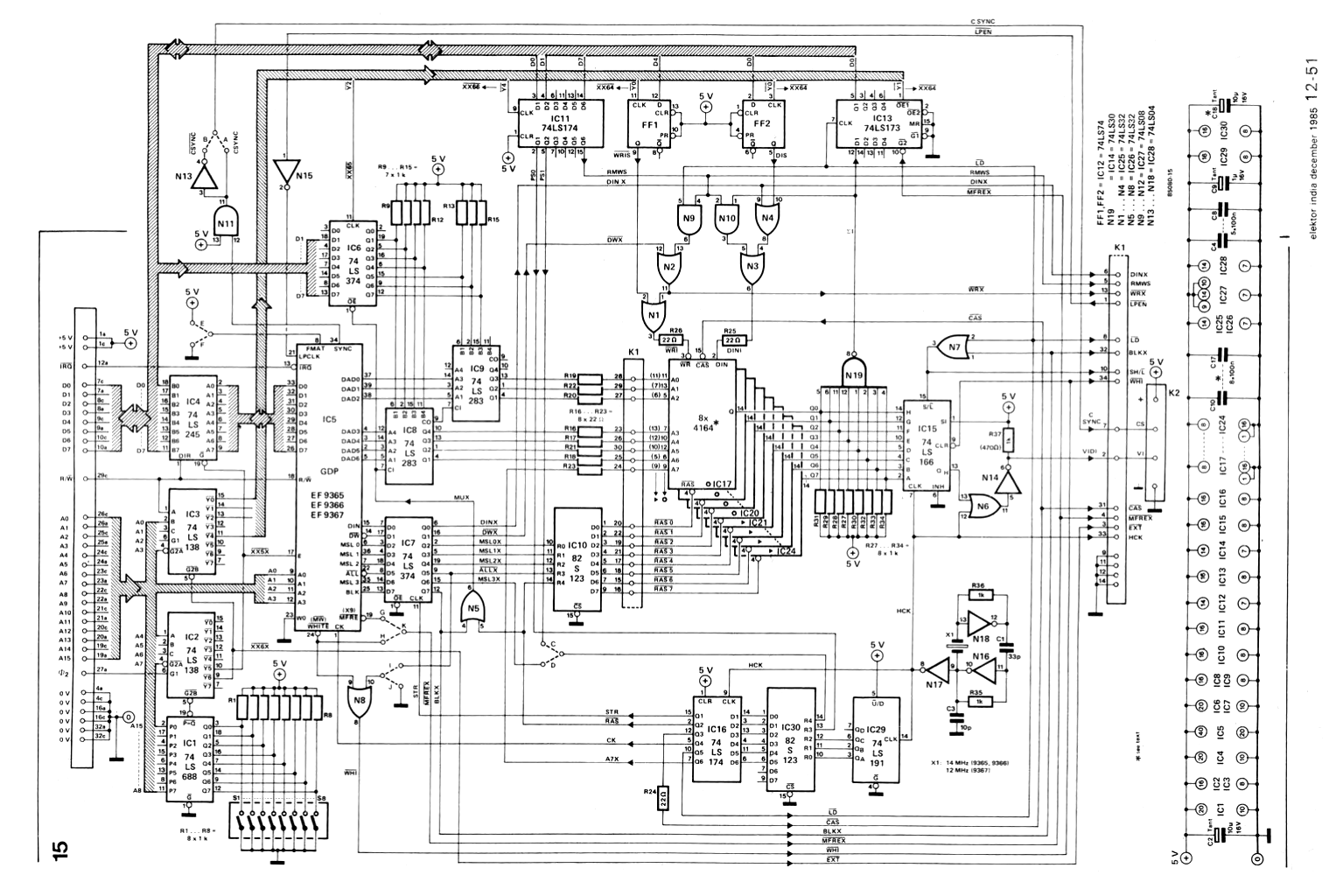This is a Eurocard sized board, and extensively documented in seven parts, in the UK magazine version dated September 1985 to March 1986.
All parts are available on the official Elektor website, but you have to be a member to access them:
high-resolution graphics card - 1 Introduction
high-resolution graphics card - 2 More introduction
high-resolution graphics card - 3 Circuit description (has the circuit diagram)
high-resolution graphics card - 4 Construction (has the copper and silk screen patterns)
high-resolution graphics card - 5 General programming information
high-resolution graphics card - 6 Colour extension board
high-resolution graphics card - 7 Graphics interpreter software
Available online as scanned archives:
high-resolution graphics card - 1
high-resolution graphics card - 2
high-resolution graphics card - 3
high-resolution graphics card - 4
high-resolution graphics card - 5
high-resolution graphics card - 6
high-resolution graphics card - 7
And in Dutch:
grafische kleurenkaarte - deel 1
grafische kleurenkaarte - deel 2
grafische kleurenkaarte - deel 3
grafische kleurenkaarte - deel 4
grafische kleurenkaarte - deel 5
grafische kleurenkaarte - deel 6
You will have to search for non-restricted material. Try https://worldradiohistory.com/
I had a go at OCRing the hex dump in order to disassemble the software, but the OCR error rate was so high it would have been quicker to read and type in the values. Even then, the image quality means some characters are hard to read. I ordered a copy of the 1980-1989 Elektor magazines on DVD in the hope that they will be much better quality, enough to extract the hex data.
For 25 euros, you no longer have to make to with poor quality scans and incomplete collections on the web.
The quality is much better indeed. The articles also have embedded OCR text, so it is possible to copy and paste that. The hex dump text had errors, but these were easy to spot and correct. I disassembled the hex data and created a source file that assembles to produce the original hex bytes.
Circuit diagram:

The hard to find 25LS2538 has been replaced by a high-speed (50ns) 32-byte PROM (IC10), the 82S123.
This could now be replaced by a PAL16L8 or GAL16V8, which is more commonly programmable by hobbyist device programmers.
Another such PROM (IC30) works with a 6-bit latch (IC16), the 74LS174, to form a state machine generating the video timing signals. The PROM could be replaced by a PAL16L8. Both PROM and latch could be replaced by a PAL16R8 or GAL16V8.
The article includes the bytes for these PROM chips, so it was easy to create source code and binaries for them.
 Keith
Keith
Discussions
Become a Hackaday.io Member
Create an account to leave a comment. Already have an account? Log In.